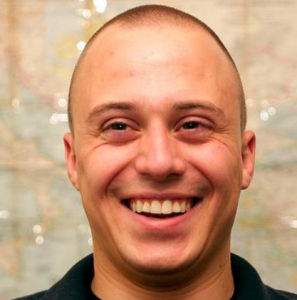 As a non-Iranian Iranophile my friends who are Iranian often are surprised that I know a thing or two about t’aarofing. So I’ll start off with a joke.
As a non-Iranian Iranophile my friends who are Iranian often are surprised that I know a thing or two about t’aarofing. So I’ll start off with a joke.
A woman is ready to give birth to twins. She is waiting, and waiting, and past her due date. So she goes to the doctor for an examination. The doctor uses his stethoscope and hears the twins communicating. They are saying, ‘please, you first.’ The other one says, ‘no, no, you first, please.’ The other one says, ‘no, no, no, please, go ahead.’
This, my friends, is an example of t’aarofing, a singular element of etiquette deeply ingrained in Iranian culture, and one of the charming methods of courtesy and politeness that can seduce anyone into becoming an Iranophile.
How did I become an Iranophile? When my friends hear how many albums of Mohsen Namjoo I own, can quote Omar Khayyam, and recite Maz Jobarani jokes, they’re even more surprised. Just like any cultural shift in one’s life, there’s a story behind it, and it begins with my family.
In 1964, fifty years ago, my Mother was a student at Oberlin College, and she went on a cultural diplomacy tour to several cities in the Soviet Union, singing in a choir. It was a tense time in Cold War geopolitics as John F. Kennedy had recently been assassinated. This experience changed her career in arts and culture in many ways, and it inspired me to serve my country. I had the honor to serve in the military and at the White House, and toward the end of my service there was a very real possibility of the US invading Iran. After my service, I studied classical history at Harvard and was enchanted with Persian culture. What truly amazed me, and disappointed me, was that the West has been in a constant dance of friendship and conflict for thousands of years with the Iranian people.
Something has to change. After studying Avestan and Zoroastrianism at university, I made many friendships with remarkable Iranian-Americans. Iranian-Americans, like many American immigrants many had to leave their country of origin under duress, and despite these difficulties, many have achieved to high levels in their fields of expertise. Ostensibly there is a Cold War going on between the governments of Iran and the US, but the truth is that Iranian-Americans have had an enormous impact on our country’s history and development. From Firouz Nader’s leadership of the US Mars Exploration Program, to Shervin Pishevar revolutionizing our transportation networks with Uber, to Anousheh Ansari, entrepreneur and the first female space tourist in the world, Iranian-Americans are everywhere in our country’s leadership.
The next chapter in this story is Americans learning more about Iranian culture in previously unforeseen ways. It is inevitable that in the coming years it will be much easier for Americans to travel to Iran, forging friendships, families and doing business. Before this happens, it’s culture diplomacy that will bring Iranians and Americans closer together, ranging from national nonprofit organizations to informal bridge building. This includes comedy on YouTube, exploring the delights of Persian cuisine at a restaurant in your neighborhood, and most of all, new friendships. So whether you favor reading Rumi in Farsi or watching Shahs of Sunset on TV, all Americans can do their part to help build bridges in unconventional ways; it’s about time.
